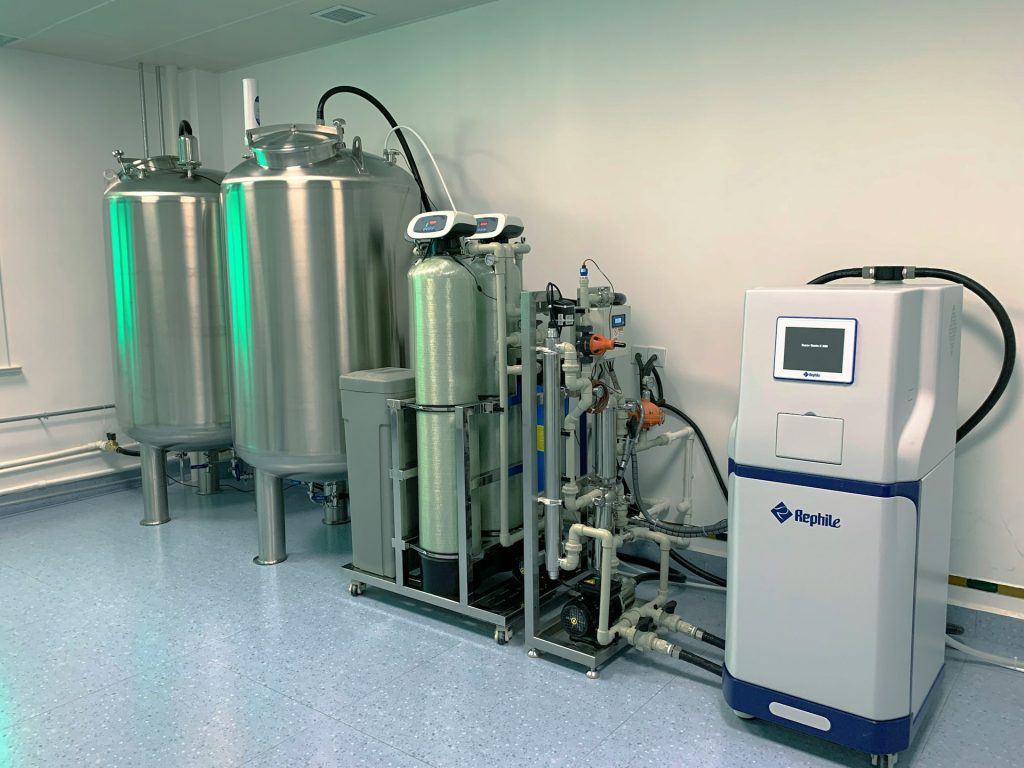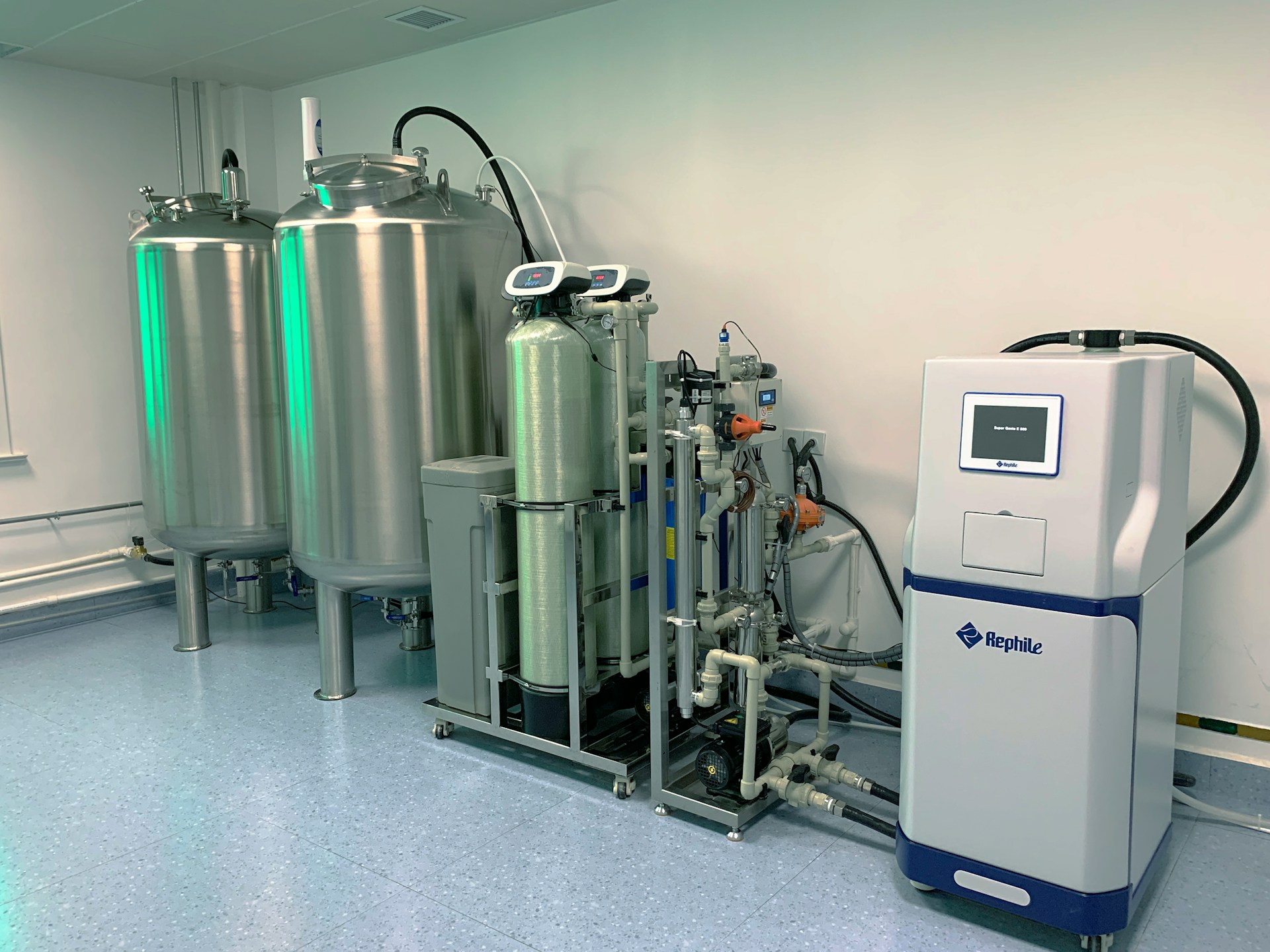Access to clean, safe water is a fundamental requirement for any industry. Yet in many regions across Africa and beyond, groundwater contains dangerously high levels of naturally occurring fluoride. Over time, excess fluoride exposure can lead to severe health issues, especially skeletal and dental fluorosis.
For industrial players that rely on water daily, this isn’t just a health concern, it’s a business one. Water contaminated with fluoride can affect product quality, damage machinery, and even lead to regulatory troubles. That’s where fluoride removal systems come in. These systems are no longer optional; they’re a smart investment in 2025 and beyond.
Let’s break down why fluoride removal is crucial, how the systems work, and what to watch out for.

Why Fluoride Is a Problem in Industrial Water
Fluoride is a naturally occurring mineral found in groundwater. While small amounts are safe (and even added to drinking water in some regions), many areas, especially in East Africa and parts of India, have fluoride concentrations well above WHO’s safe limit of 1.5 mg/L.
For industrial users, this presents several issues:
- Fluoride corrodes metals and damages equipment over time
- It alters the chemical balance of water, affecting process efficiency
- It can contaminate final products, particularly in food, beverage, or pharmaceutical industries
- It creates environmental compliance issues, especially for wastewater discharge
Ignoring fluoride in your water supply can silently drain your operations, both financially and reputationally.
How Fluoride Removal Systems Work
Modern fluoride removal systems use a combination of advanced filtration technologies to reduce fluoride levels to acceptable limits. The most common methods include:
Activated Alumina (AA): One of the most effective and cost-efficient materials. It attracts fluoride ions from water like a magnet, binding them and making the water safer.
Reverse Osmosis (RO): A membrane-based system that filters out nearly all dissolved solids, including fluoride. Ideal for industries that need ultra-pure water.
Electrocoagulation: This technique uses electric currents to remove fluoride, along with other contaminants. It’s suitable for larger volumes and industrial wastewater.
Bone Char and Natural Media Filters: Though less common in industrial settings, these are used in low-cost or small-scale systems.
Each method has its pros and cons depending on the type of water, level of contamination, and volume needed. It’s essential to test your water before selecting a system.
Key Benefits of Using Fluoride Removal Systems
Here’s why these systems have become a strategic asset for industries:
1. Improved Product Safety and Quality
If fluoride gets into your final product, especially in consumables or pharmaceuticals, it can cause recalls, customer complaints, and even legal issues. Clean water ensures clean production.
2. Extended Equipment Life
High fluoride levels accelerate wear and tear on metal pipes, tanks, and boilers. Removing fluoride preserves your infrastructure and reduces maintenance costs.
3. Regulatory Compliance
Environmental agencies are tightening discharge regulations across Africa. Proper fluoride management helps you stay ahead of compliance issues and avoid fines.
4. Enhanced Corporate Image
Sustainable and responsible water use is becoming a badge of honor for industrial leaders. Using fluoride removal technology shows your commitment to environmental health.
5. Smarter Water Recycling
Treated water can be reused more efficiently in processes like cooling, cleaning, and even production. This leads to water conservation and energy savings.
Common Mistakes to Avoid
Many businesses rush into fluoride treatment without a proper plan. Here are a few mistakes we’ve seen:
- Skipping water analysis. Always test your water first. Knowing the exact fluoride levels and other impurities is crucial to choosing the right system.
- Choosing the wrong capacity. Undersized systems can become overloaded, while oversized ones waste energy. Match system size to your operational demand.
- Ignoring pre-treatment. In areas with hard water or other minerals, pre-filtration is necessary to prevent clogging and ensure system longevity.
- Poor maintenance planning. Like any system, fluoride removal units require regular service and media replacement.
What We Do at Spenomatic Kenya
At Spenomatic Kenya, we understand the unique water challenges facing East African industries. We’ve spent over two decades engineering customized water treatment solutions that work, not just on paper but on the ground.
We design fluoride removal systems that match your water chemistry, your industrial process, and your budget. Whether you’re in food processing, bottling, pharmaceuticals, or general manufacturing, our systems are built to ensure safe, compliant, and sustainable operations.
We also provide ongoing support, from site audits and lab testing to installation and training, so you get a complete solution, not just equipment.
Final Thoughts
In a region where fluoride contamination is widespread, investing in a proper removal system is more than just smart, it’s essential. The risks of inaction are real: product damage, costly maintenance, and regulatory trouble.
On the other hand, a reliable fluoride treatment system turns your water into an asset, not a liability. It protects your people, your process, and your profits.
If you haven’t tested your industrial water for fluoride yet, now is the time. And if you already know there’s a problem, don’t wait until it costs you more. Act now, and make your water safer and smarter.
FAQs
- How do I know if my industrial water has too much fluoride?
You need a lab test or water analysis to measure the fluoride concentration. A level above 1.5 mg/L is considered unsafe by the World Health Organization. - Is reverse osmosis enough for fluoride removal?
Yes, RO systems can effectively remove fluoride, but they may require pre-treatment for hard water or high TDS levels. - How often should fluoride removal media be replaced?
It depends on water quality and system size, but generally, activated alumina should be replaced every 6–12 months. - Can fluoride removal systems be integrated into existing water treatment plants?
Yes. Most systems are modular and can be customized to fit into existing industrial setups without major disruption. - What makes Spenomatic Kenya’s approach different?
We focus on custom-engineered systems backed by strong local support, on-site expertise, and a track record of delivering results in East Africa’s toughest water conditions.

